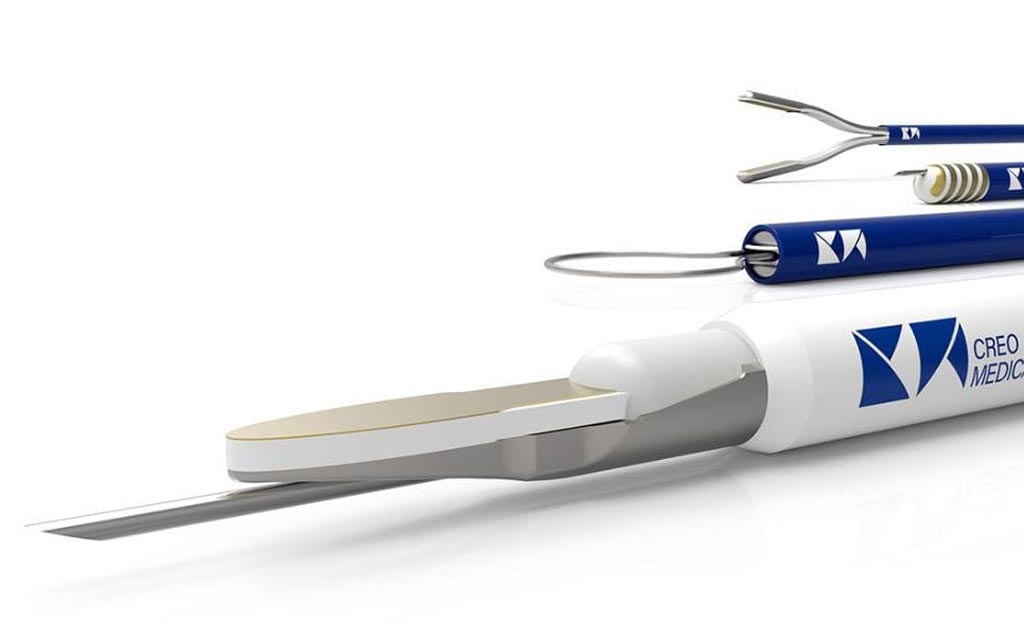Electrosurgical Platform Combines RF Ablation and Electrocautery
By HospiMedica International staff writers
Posted on 06 Sep 2017
A novel endoscopic submucosal dissection (ESD) device enables minimally invasive removal of early stage cancerous and pre-cancerous lesions in the bowel.Posted on 06 Sep 2017
The Creo Medical (Chepstow, United Kingdom) Speedboat RS2 combines bipolar radiofrequency (RF) for demarcated localized cutting and controlled lateral and forward dissection, with precise hemostasis via microwave coagulation. Other features include an integrated injection needle that maintains submucosal lift, obviating the need for instrument changes; a protective hull that reduces the risk of muscle damage; and an optimized shaft design that enables the controlled rotation. Power to the Speedboat RS2 is supplied by the company’s proprietary CROMA RF and microwave generator.

Image: The Speedboat RS2 combined RF/microwave dissection device (Photo courtesy of Creo Medical).
For cutting the mucosa and submucosa, CROMA generates bipolar RF at 400 KHz; to provide hemostasis with microwave coagulation, Croma generates an additional 5.8 GHz of power. In a recent clinical trial that involved 31 patients with complex colorectal polyps, the resected sites healed within three to six months in 97% of the patients; the device also coagulated 50 of the 51 bleeds without causing adverse events. The company intends to further develop the CROMA system for bronchoscopy and laparoscopy procedures.
“Endoscopy has been a rapidly expanding practice due to the advent of colorectal cancer screening in most healthcare systems. This has driven growth in equipment and devices to enhance the ability to screen and detect early stage and pre-cancerous lesions in the GI tract,” said Craig Gulliford, CEO of Creo. “We believe that with the CROMA system, Speedboat, and our suite of products, we are well positioned to become a leader in this billion-dollar plus market.”
ESD is a technique for therapeutic endoscopy of superficial gastrointestinal neoplasms. Three steps characterize it: injecting fluid into the submucosa to elevate the lesion, cutting the mucosa surrounding the lesion, and dissecting the submucosa beneath the lesion. The ESD technique has rapidly permeated in Japan for treatment of early gastric cancer, due to its excellent results of en-bloc resection, compared to endoscopic mucosal resection (EMR). But ESD requires highly skilled endoscopic surgeons, and a suitable training program is demanded.
Related Links:
Creo Medical














